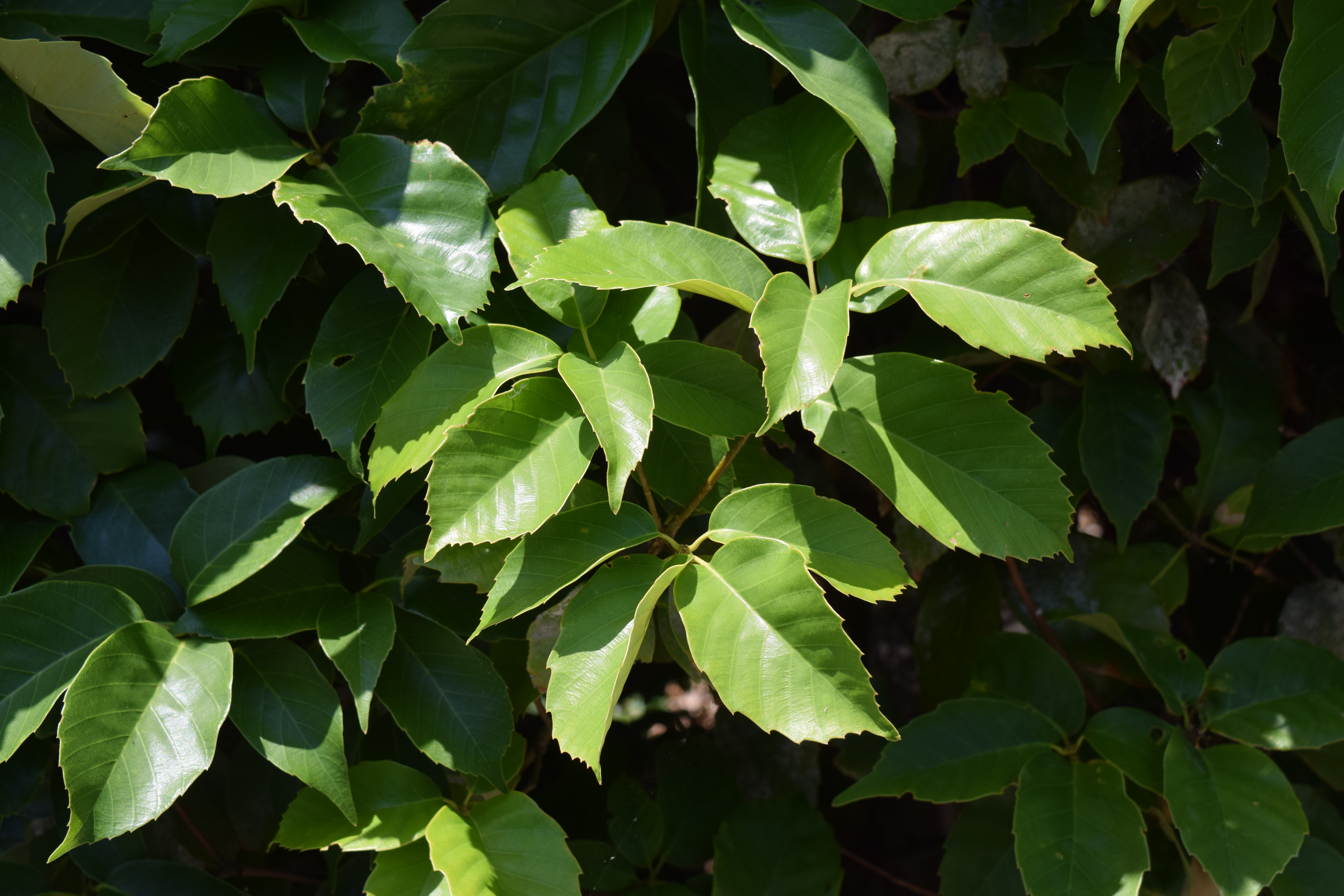Ring-cupped oak
(Quercus glauca)

Description
Quercus glauca, commonly called ring-cupped oak or Japanese blue oak, is a tree in beech family (Fagaceae). It is native to eastern and southern Asia, where it is found in Afghanistan Bhutan, China, northern and eastern India, southern Japan, Kashmir, Korea, Myanmar, Nepal, and Vietnam. Quercus glauca is a small to medium-sized evergreen broadleaf tree growing to 15–20 m tall. The leaves are a distinct deep purple-crimson on new growth, soon turning glossy green above, glaucous blue-green below, 60–13 mm long and 20–50 mm broad, with a serrated margin. The flowers are catkins, and the fruit are acorns 1–1.6 cm long, with series of concentric rings on the outside of the acorn cup (it is in the "ring-cupped oak" sub-genus). It is planted as an ornamental tree in regions of Europe and North America with mild winters. Its acorns are edible. When dried and ground into powder they can be mixed with cereals and used as flour. The roasted seeds can be used as a coffee substitute. The wood of Quercus glauca is a valuable fuelwood. Its leaves and stems are relished by deer.
Taxonomic tree:







